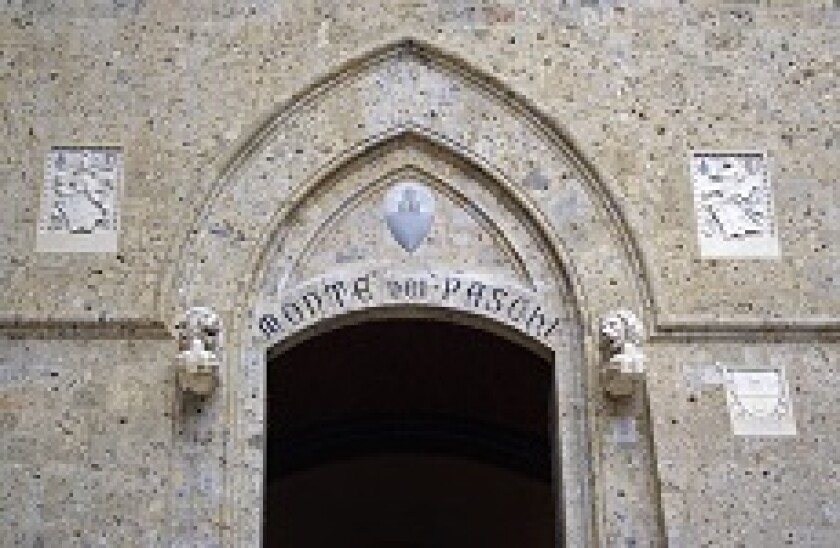When Monte was rescued by the Italian government, it had to agree on the terms of a turnaround plan that would make it not only viable in the longer term, but robust and profitable, too.
As with most restructuring plans, the bank’s objectives were spelled out clearly and, at the time, they seemed at least faintly in touch with reality, with a plan to cut costs and balance sheet and push back to profitability.
But even the most optimistic onlookers will have been hit with a dose of reality at the end of last week, when Monte published a preliminary earnings statement.
The Italian lender posted a giant net loss of €3.4bn for 2017, as well as a net loss of €502m for the fourth quarter of 2017 — above most analysts’ expectations. It's not just exceptional items, either. Even after all the one-off charges and restructuring costs, the underlying business is also losing money.
And the results announcement posed some big questions around Monte’s non-performing exposure (NPE) levels, which remain central to the bank's plans to fix up and look sharp in the next three years.
Monte said that it had a gross NPE ratio of 21.4%, discounting the fact that work is ongoing on its €24.2bn bad loan disposal.
That was above the level that some analysts had been hoping for at this stage, partly because new non-performing loans are continuing to pile up on Monte’s books.
Some €800m of unlikely-to-pay loans and €300m of past due loans were reclassified as bad loans in the fourth quarter of 2017. At the same time, Monte reported a €4.6bn fall in the net volume of customer loans quarter on quarter.
“Reaching the 14% gross NPE ratio in 2019 may prove more demanding than expected,” said a results summary from Riccardo Rovere, an equity analyst at Mediobanca.
Silver lining
It wasn’t all bad news for Monte, of course. The fully loaded common equity tier one ratio remained robust at 14.2% in the fourth quarter. And the economic recovery in Italy will surely help MPS to boost profits and shore up asset quality — a rising tide lifts all boats, even if they're leaking a bit.
But there are also plenty of headwinds for Monte in the years ahead, in addition to its existing problems.
First of all, the bank will have to weather the effects of a new set of proposals from the Single Supervisory Mechanism on how to provision for non-performing loans (NPLs), expected this year.
And Monte won’t be immune from the effects of Basel IV or the Fundamental Review of the Trading Book, either.
Italian taxpayers will be looking on with a good deal of interest, having purchased a majority stake in the bank last year, at a price of €6.49 per share.
Unfortunately for them, Monte shares are down 9% this week alone, and were quoted at around €3.40 a share on Tuesday afternoon.
Monte is famously old. Its roots stretch back to 1472 in the Republic of Siena, moving on through the trying times of the Italian war of 1551, the French revolution and the financial crisis in 2007-2008.
The trouble, it seems, is that old difficulties die hard.
